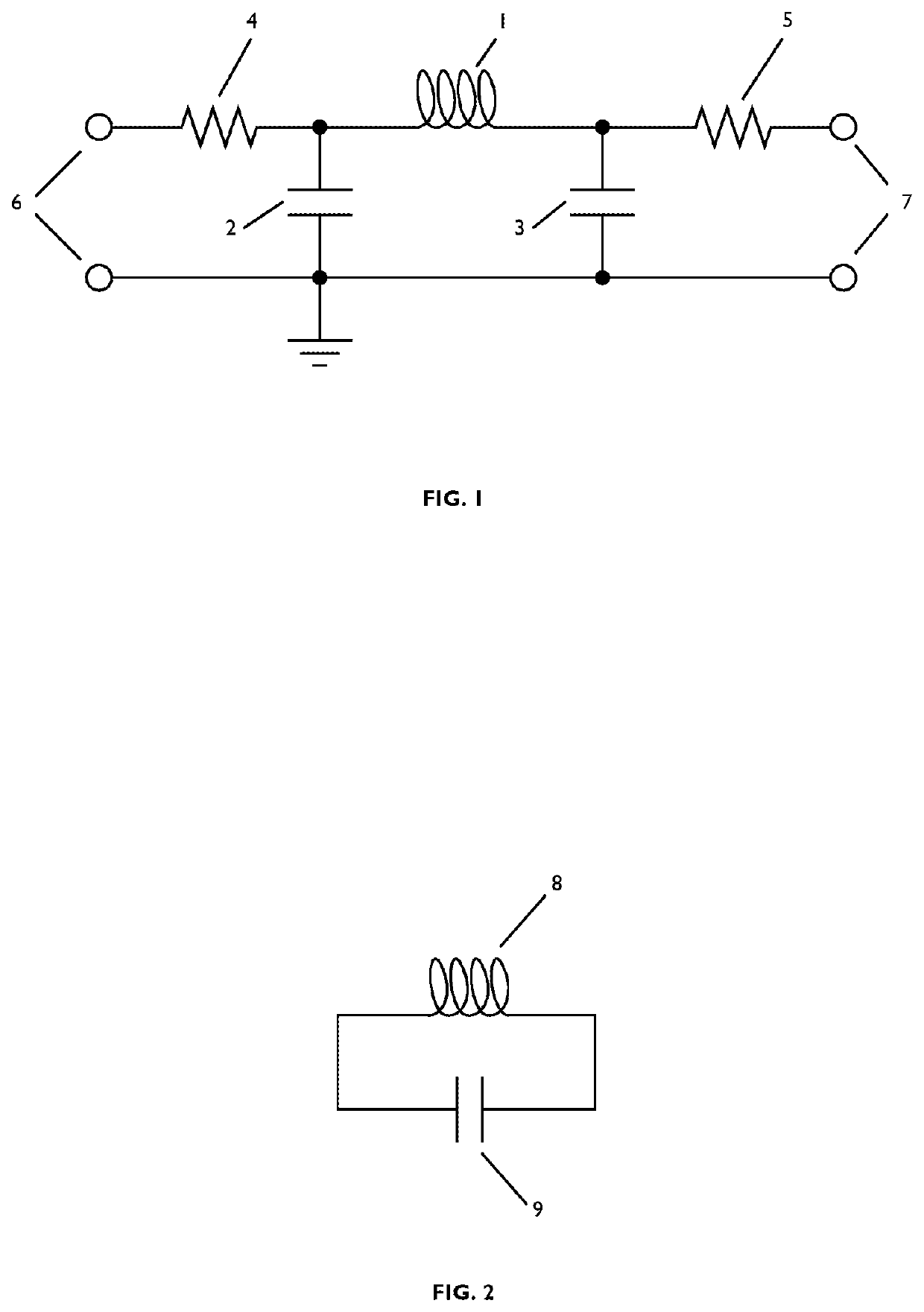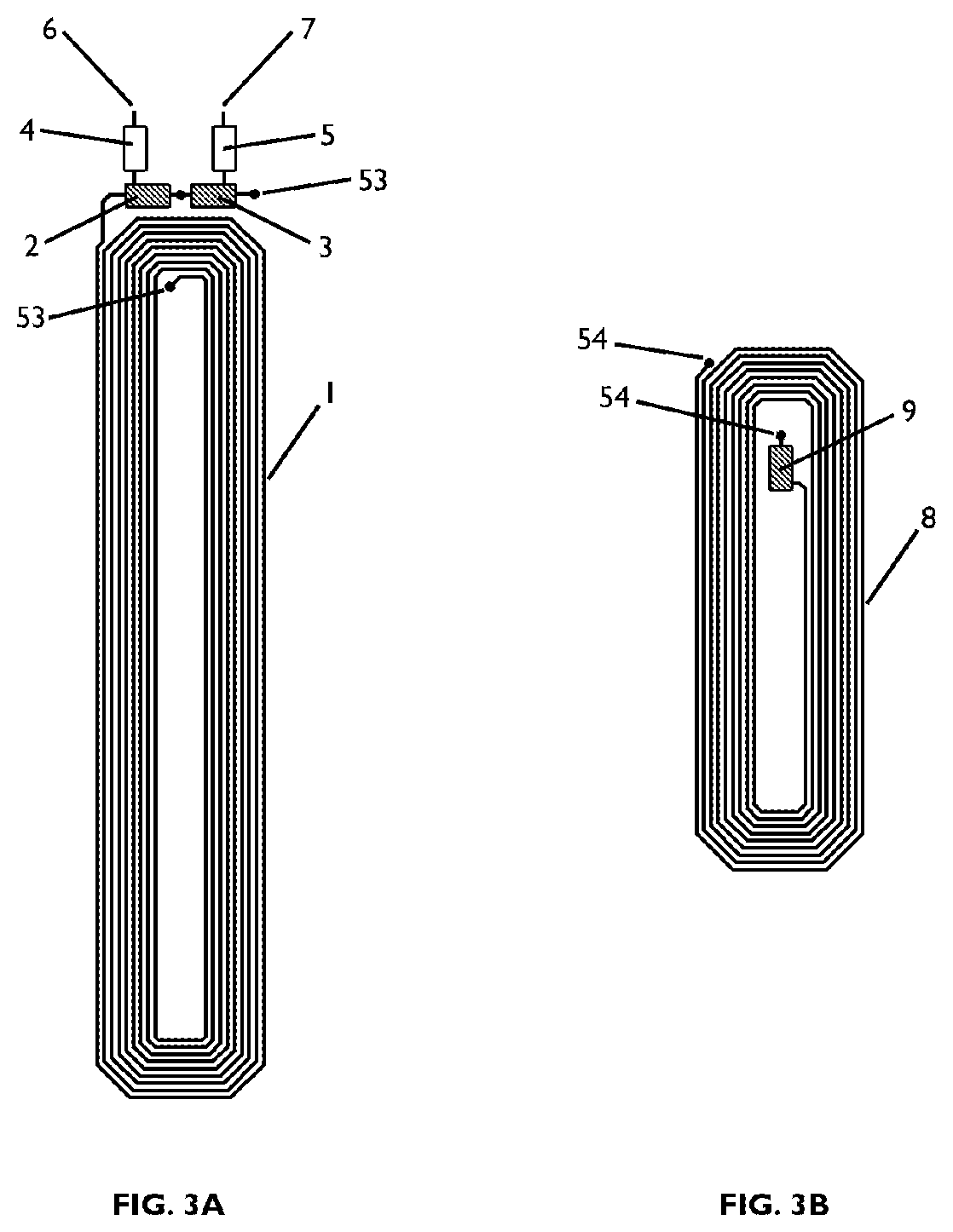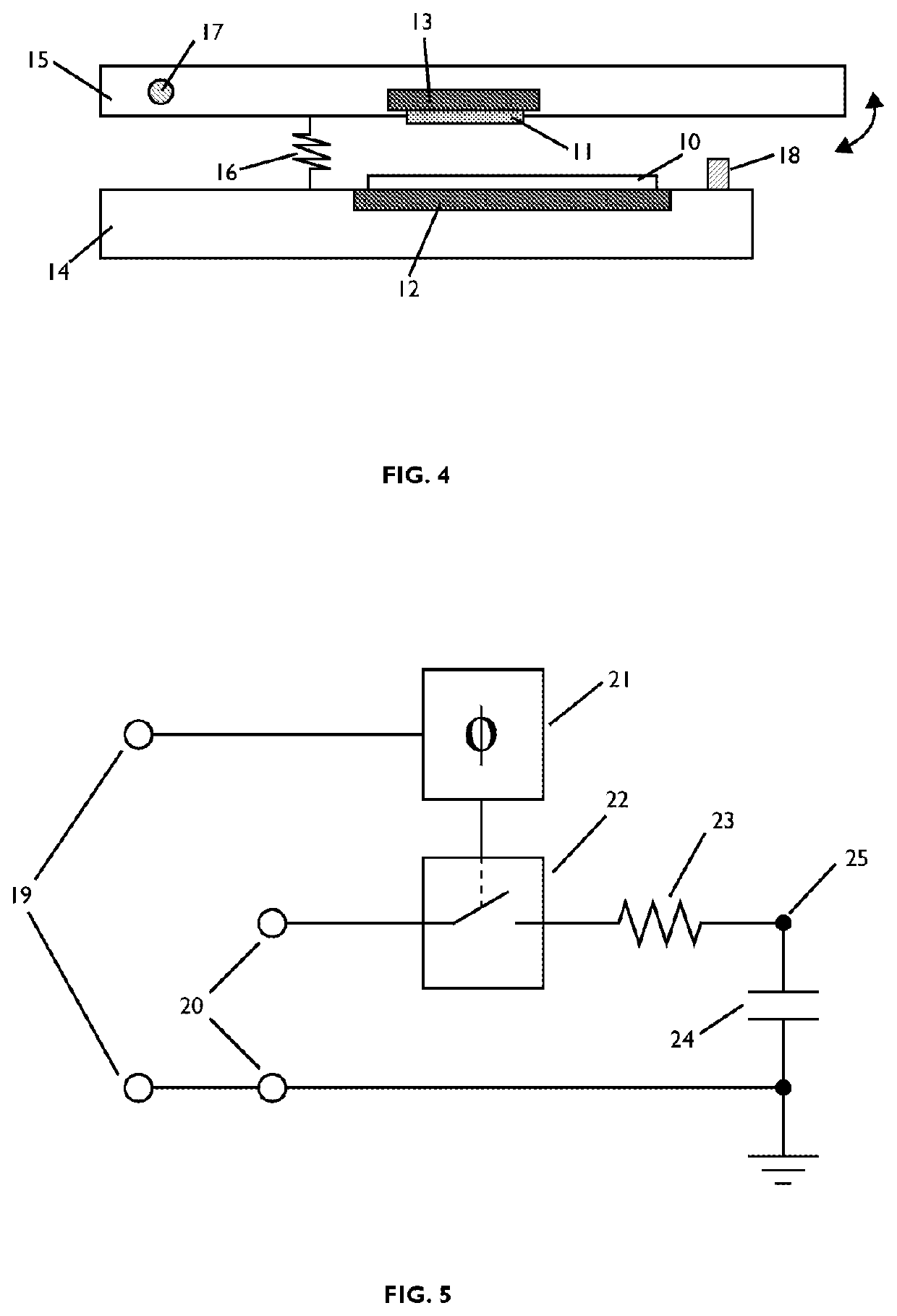Keyboard sensor systems and methods
- Summary
- Abstract
- Description
- Claims
- Application Information
AI Technical Summary
Benefits of technology
Problems solved by technology
Method used
Image
Examples
Embodiment Construction
[0064]A preferred embodiment comprises a musical keyboard with a plurality of moveable keys wherein each moveable key FIG. 4 comprises: a moveable top member 15 that is rotated about a pivot point 17 and which resists movement by means of a spring 16 or other mechanical linkage; a fixed bottom member 14; a deformable end-stop 18 which limits movement of said top member; and a position sensor comprising an active tuned resonant circuit 10 inductively coupled to an electrically reactive element 11, henceforth referred to as the target, providing a signal which varies as the mutual separation of said active tuned resonant circuit and said target is varied, drive electronics connected to said active tuned resonant circuit and read-out electronics connected to said active tuned resonant circuit.
[0065]The active tuned resonant circuit FIG. 1 comprises an input resistive element 4, a coil 1, two capacitive elements 2 and 3, an output resistive element 5, a means of connecting 6 drive elect...
PUM
 Login to View More
Login to View More Abstract
Description
Claims
Application Information
 Login to View More
Login to View More - Generate Ideas
- Intellectual Property
- Life Sciences
- Materials
- Tech Scout
- Unparalleled Data Quality
- Higher Quality Content
- 60% Fewer Hallucinations
Browse by: Latest US Patents, China's latest patents, Technical Efficacy Thesaurus, Application Domain, Technology Topic, Popular Technical Reports.
© 2025 PatSnap. All rights reserved.Legal|Privacy policy|Modern Slavery Act Transparency Statement|Sitemap|About US| Contact US: help@patsnap.com



